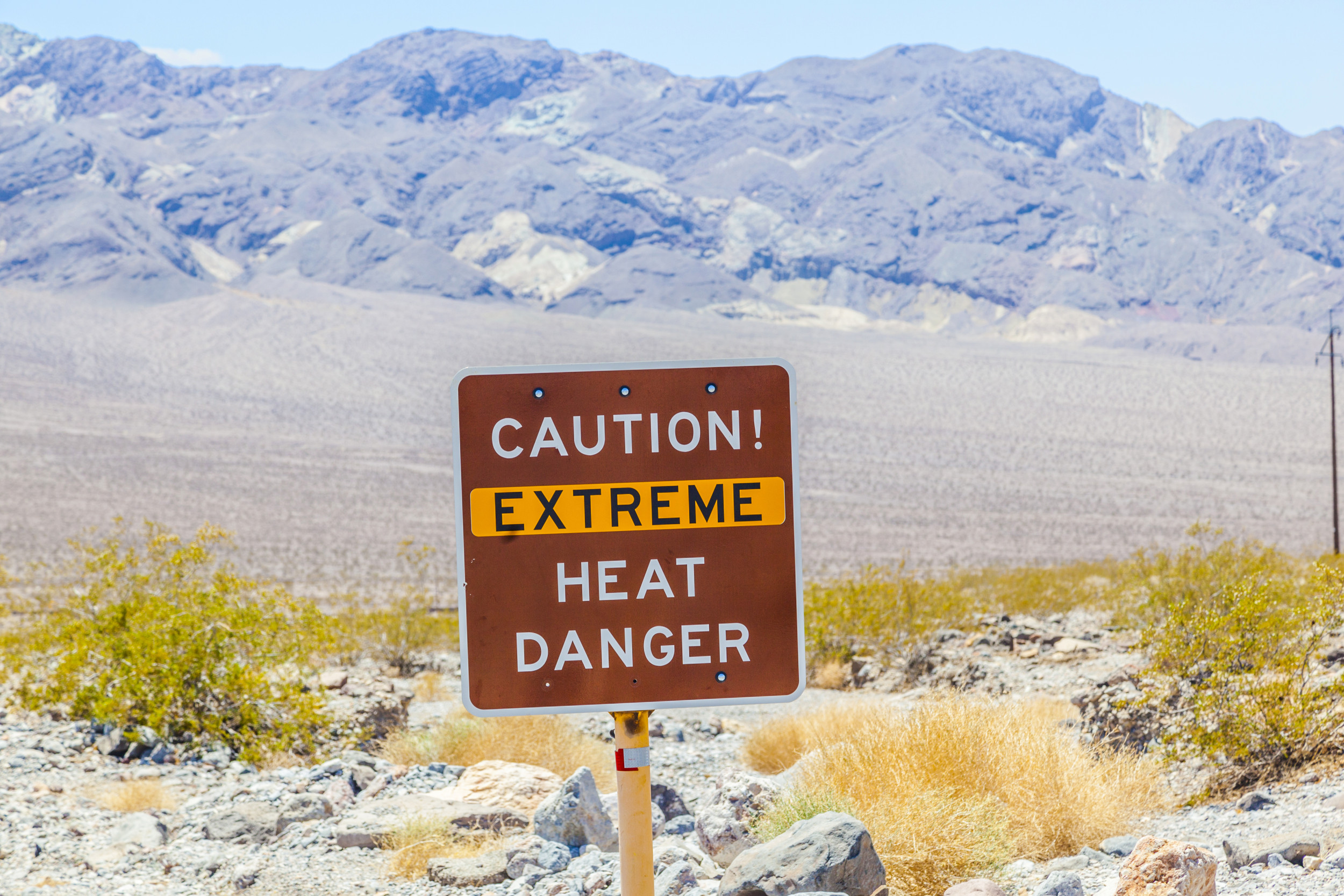After several heat-related deaths occurred in the park, Death Valley National Park officials warned visitors not to “underestimate the dangers of extreme heat.”
A 57-year-old man died on August 1 as a result of the extreme heat in the park, when temperatures rose above 48 degrees Celsius.
Peter Hayes Robino, a resident of Duarte in Los Angeles County, died of hyperthermia after his car plunged over a 20-foot precipice.
Hyperthermia is a condition that occurs when the body is unable to regulate its temperature after prolonged exposure to extreme heat. Heat cramps, heat exhaustion, and heat stroke are forms of hyperthermia.
“My condolences go out to Mr. Robino’s family and friends,” said Superintendent Mike Reynolds, one of the emergency medical technicians on the scene, in a statement from the National Park Service (NPS). “His death is a reminder not to underestimate the dangers of extreme heat.”
Robino, who had been walking the one-mile Natural Bridge Trail, was noticed stumbling as he returned to his car. Passersby offered to help him, but he declined and reportedly didn’t say much.
“Robino got into his car and drove down a steep 20-foot embankment at the edge of the parking lot. The car overturned and the airbags deployed. A passerby went to call 911. Other passersby helped Robino walk back to the parking lot and provided shade,” the NPS statement said.

ISTOCK / GETTY IMAGES PLUS
NPS rescue crews arrived at the scene at 4:10 p.m. local time, 20 minutes after the emergency call was received, but it was too late.
“Bystanders said Robino was breathing until shortly before park rangers arrived. NPS paramedics began CPR and transferred Robino to the air-conditioned ambulance. At 4:42 a.m., Robino was pronounced dead,” the NPS said.
The Inyo County Coroner performed an autopsy and determined that Robino died of hyperthermia.
“Park rangers in Death Valley National Park advise summer visitors to avoid the heat by staying in or near air-conditioned rooms, avoiding hiking at low elevations after 10 a.m., drinking plenty of water, and eating salty snacks,” the NPS statement said.
Symptoms of heat exhaustion include heavy sweating, weakness, dizziness, nausea, headache, and rapid heart rate. When this progresses to heat stroke, the body’s ability to cool itself through sweating fails, leading to confusion, unconsciousness, and ultimately organ failure and death.
According to the Centers for Disease Control and Prevention, about 1,220 people die from extreme heat in the United States each year.
This is the second heat-related death in Death Valley this year. The first was a German man who was riding through the park with a group of motorcyclists on July 6, when temperatures reached 59 degrees. The next day, temperatures rose to 43.9 degrees.
“The visiting group was traveling by motorcycle. Once the heat index exceeds 99°F, the ambient air offers no relief,” the NPS said in a statement at the time. “In addition to not being able to cool down while riding due to the high ambient air temperatures, experiencing Death Valley by motorcycle in this heat is further challenging, as one must wear heavy safety gear to avoid injury in the event of an accident.”

July 2024 was the hottest month on record in Death Valley, with an average 24-hour temperature of 108.5 degrees. The previous record was 108.1 degrees, set in 2018.
In July, other non-fatal heat-related injuries occurred in the park, including a woman who was hospitalized after she fainted when she was unable to continue hiking in temperatures between 43 and 46 degrees Celsius.
One man suffered second-degree burns to his feet after walking barefoot through the Mesquite Flat Sand Dunes and losing his flip-flops. The air temperature at the time was about 120 degrees Fahrenheit (49 degrees Celsius), and the ground temperature was probably much higher.
“We just experienced the hottest month in history in the hottest place on Earth! Six of the 10 hottest summers occurred in the last decade, which should be a wake-up call,” Reynolds said in a statement on August 2.
“Record-breaking months like this could become the norm as global temperatures continue to rise. Visitors to the park should plan ahead and be prepared to face extreme temperatures during the summer months.”
Do you have a tip for a science story that Newsweek should report? Do you have a question about Death Valley? Let us know at [email protected].

